Haleem is a classic Pakistani meat and grain stew, made with wheat, barley, lentils mixed into a spicy beef mixture, for the ultimate comfort food.
There are a few dishes that are synonymous with large gatherings in Pakistan, and Haleem is definitely up there, along with Biryani, and maybe Nihari.
This Haleem is the perfect meal. It is:
- Nutrient Rich – with lots of grains and lentils
- Comfort Food
- Spicy & Tangy Taste
- Perfect for a crowd
- Frezeer friendly

What is Haleem?
Haleem is a classic one-dish meal, a pot of meat and grains porridge or stew, that is hot and spicy!
Haleem is a grain and meat porridge made with tender shredded beef and slow-cooked barley, wheat, rice, and a variety of lentils. Legend has it that it was often made as a dish to serve a crowd when not much else was available.
Historically, Haleem is a dish said to be inspired by Harees, a popular meat and wheat porridge made in the Middle East. It was brought over to the subcontinent by Mughal Emperor Humayun. Since then, Haleem has evolved into a dish in its own right, the subcontinent version being spicer in taste.
Today, Haleem is often enjoyed at large gatherings such as weddings, and it is popular in Ramadan because it is so nutritious, and high in calories, making it a perfect meal at the end of a long fast.
Looking for more Traditional Pakistani Dishes?
If you’re looking for more traditionally Pakistani recipes, here are some of our favorites:
- Pakistani Chicken Biryani Recipe
- Korma: Chicken braised in a Yogurt sauce
- Karahi Chicken: Chicken in Spicy Tomato Sauce
- Kofta Curry: Pakistani Beef Meatball Curry
Ingredients for Haleem
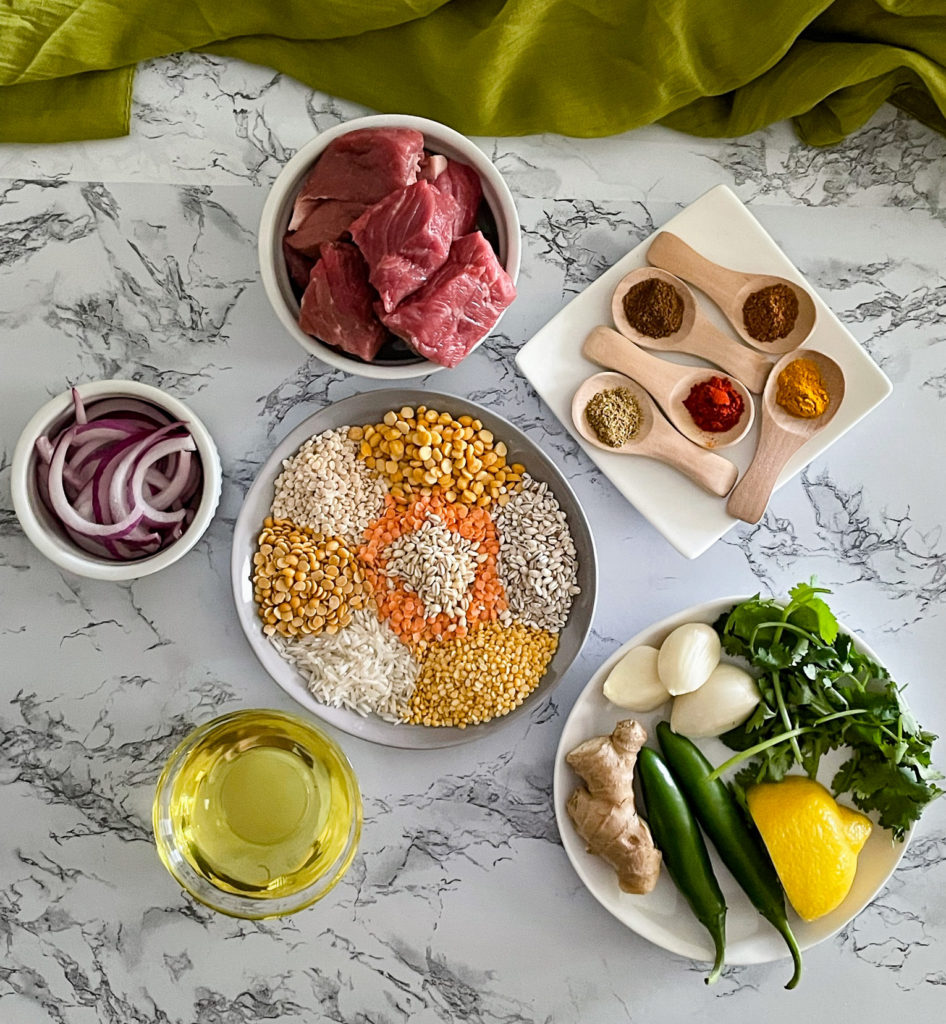
Don’t let this large list of ingredients intimidate you – this dish is mostly a hands-off recipe.
Grain Porridge
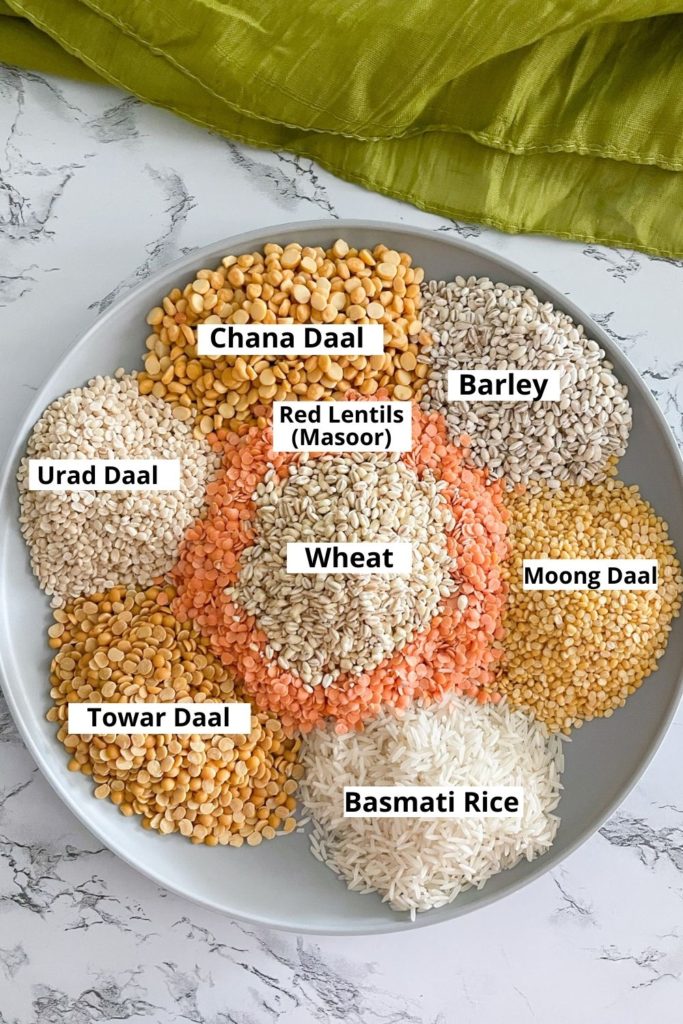
- Wheat – peeled wheat is used for this recipe – in Indian and Pakistani stores, it is often labeled as Haleem Wheat.
- Barley – readily available at most grocery stores.
- Chana daal – Split chickpeas – these are yellow in color.
- Masoor daal – Red lentils – reddish orange in color
- Moong Dal – split mung bean, also known as the green gram, maash, or moong. It is a green colored daal
- Urad Dal – Black gram, split and skinned.
- Towar Daal or Toor Dal – also known as Arhar or Pigeon Peas
- Basmati Rice – any long grained rice will work for this recipe. We typically use Royal Basmati Rice.
Meat Stew
- Beef – we typically use large chunks of beef. Any cut will do as it is cooked for a long time. If you have bones available as well, make sure to add them for more flavor.
- Onions – sliced onions are added to start cooking the meat to add a ton of flavor in the dish!
- Ginger – Garlic Paste – This is a popular addition to lots of Pakistani and Indian dishes. It is made with equal parts of crushed ginger and crushed garlic. If you opt to make your own, you can make a big batch of ginger-garlic paste ahead of time and keep it in the fridge for about two weeks.
- Ground Spices – Coriander powder, Cumin powder, Turmeric Powder, Red Chili Powder – these add the right combination of spices for the classic Haleem taste.
- Garam Masala – a special spice blend used widely in Indian Pakistani cooking. You’ll use it a lot!
How to make Haleem?
Haleem is definitely a dish that takes time to prepare. But it is mostly a hands-off recipe, while you’re waiting for the gains and meat to cook.
There are two parts to this Haleem recipe:
- Grains – soaked, and prepared
- Meat Stew
Prepare the Grains
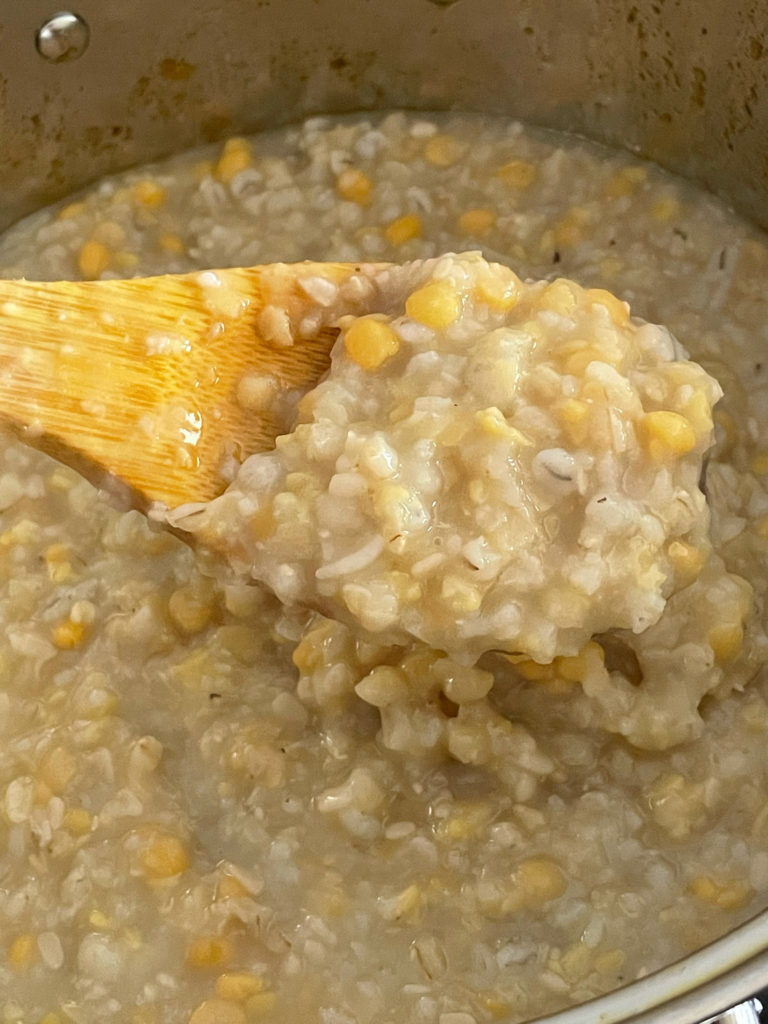
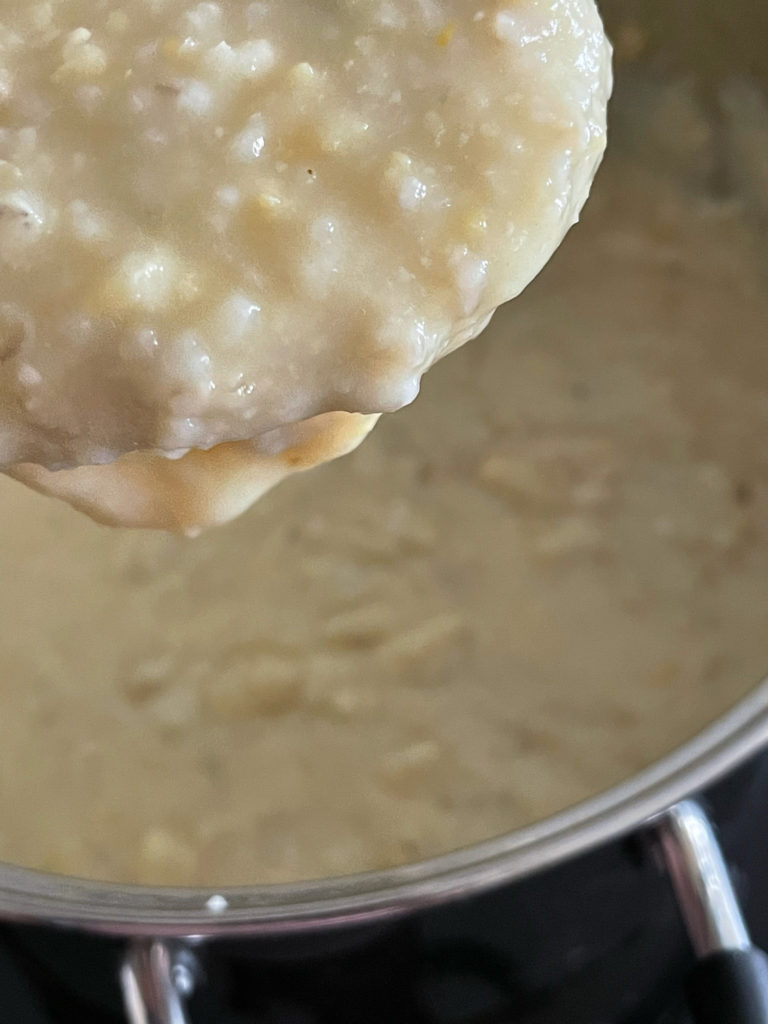
- Soak the wheat and barley overnight.
- Soak all the daal (lentils) and rice in a bowl for about 2-3 hours, before cooking.
- In a large pot, add the soaked wheat and daal. Add enough water to cover the grains, and cook for 5-7 minutes on medium-high heat. Then cook on low heat till all the wheat, barley, and daal (lentils) are tender. Depending on wheat, and how long it was soaked, it can take 2-3 hours.Mix occasionally, so that the mixture does not stick to the bottom. If it starts to stick, add a little hot water.
- Once all the lentils are tender, remove from heat.
- Transfer the mixture to a large blender, or use an immersion blender until the lentils and grains are completely blended, and no longer whole.
Meat
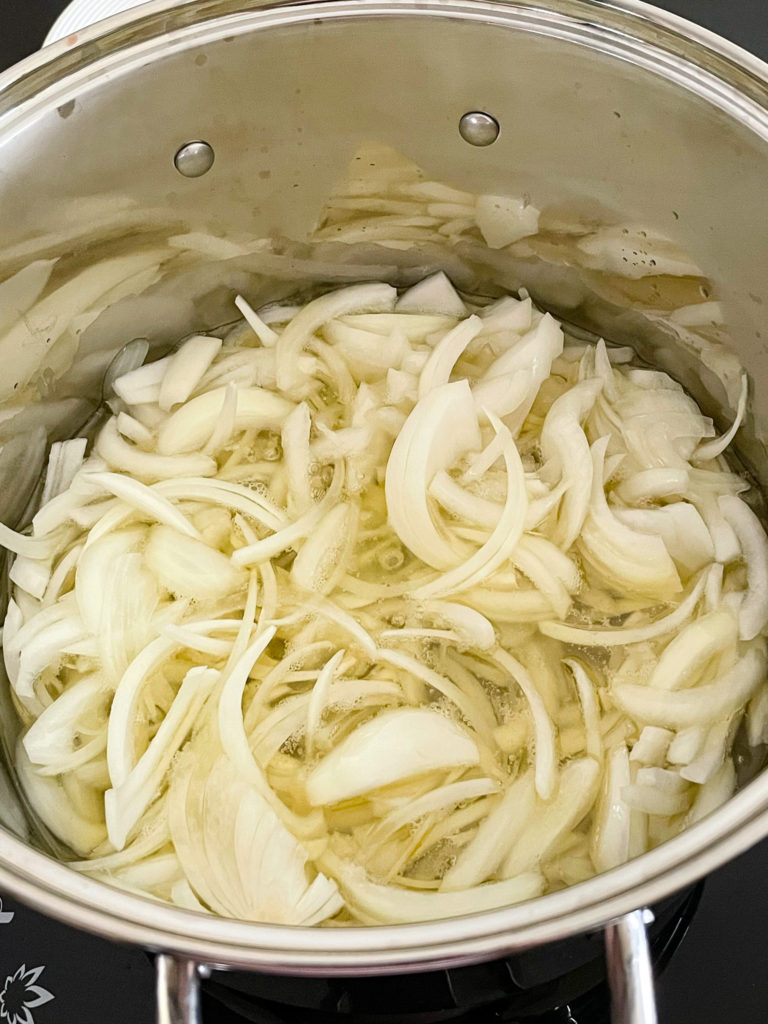
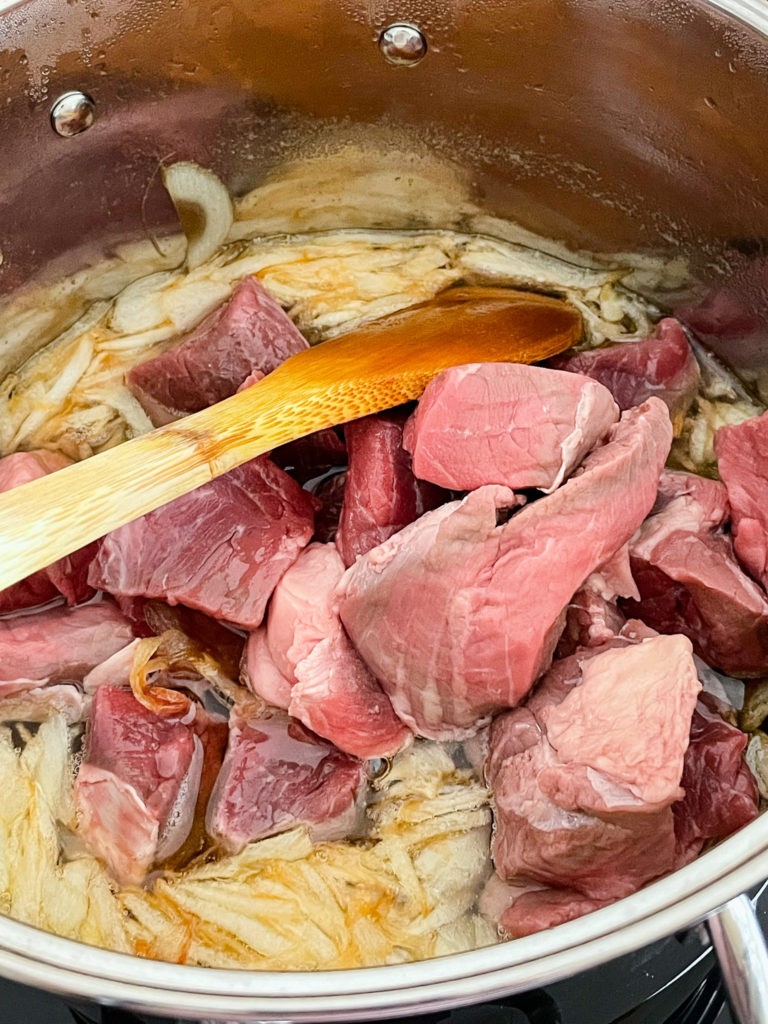

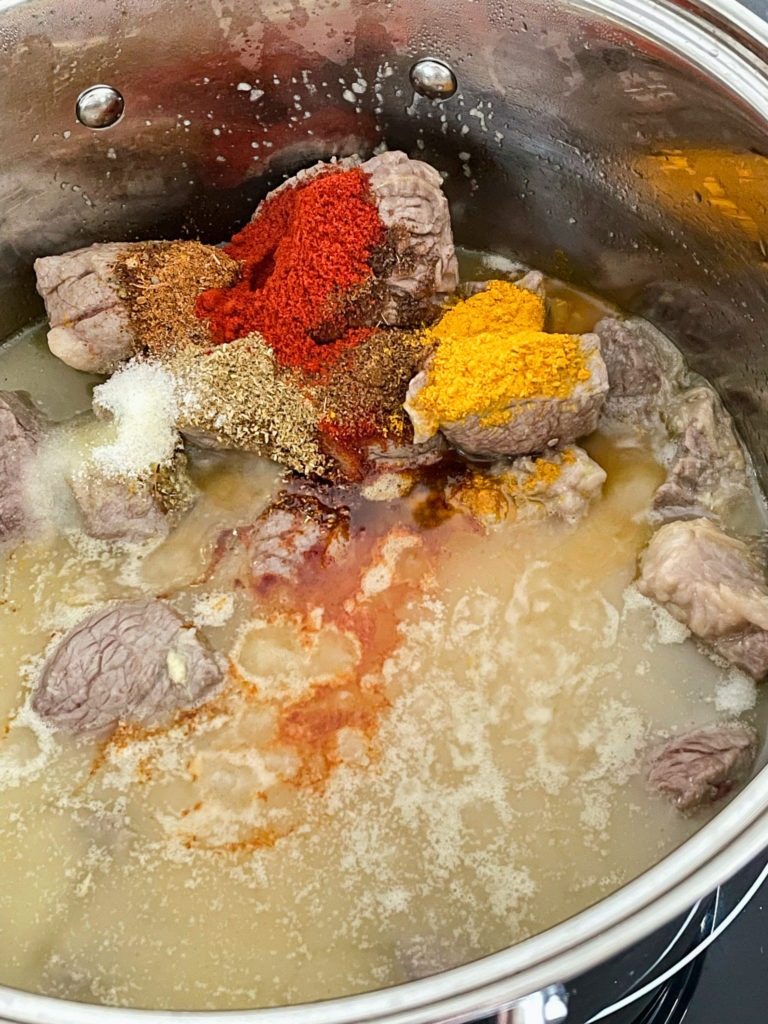

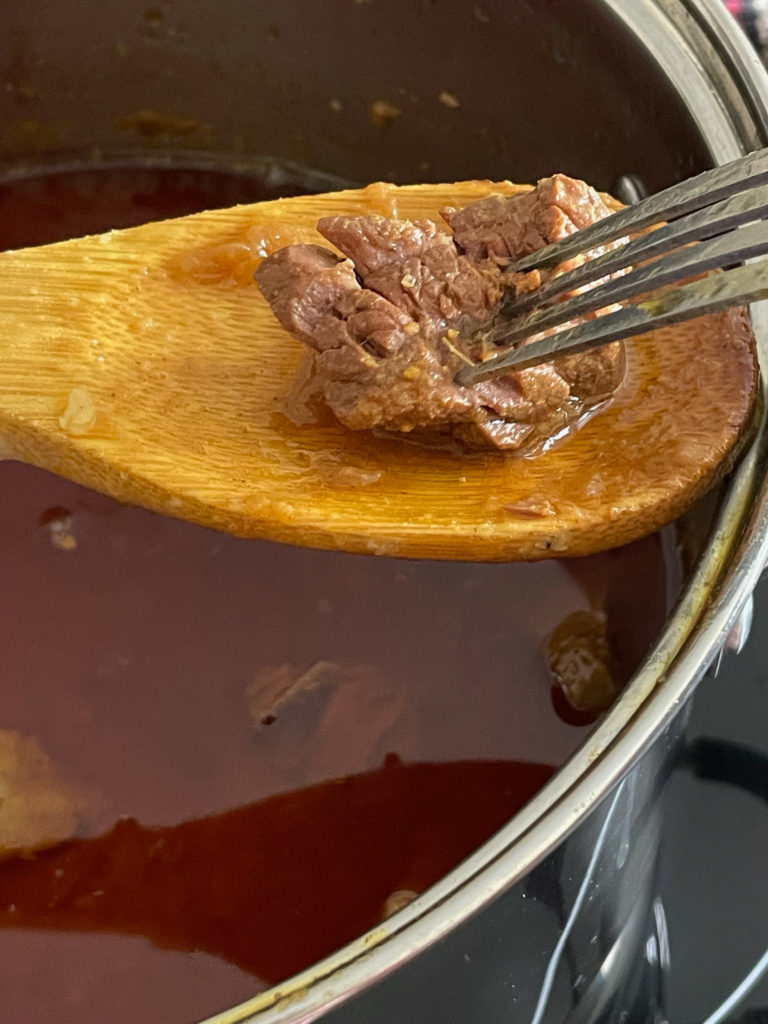
- In a separate large pot, add the oil, along with sliced onions. Cook on medium heat until lightly golden in color.
- Add in the meat, along with ginger garlic paste and mix well.
- When the meat is no longer red/pink on the outside, add the dry spices and mix well. Add ¼ cup water if the mixture starts to stick to the bottom.
- Add 2-3 cups of water and cook on medium heat. Note: You can do this step in a pressure cooker or an Instant Pot to help the meat cook faster.
- Once meat is tender, shred the meat, using a wooden spoon / ghutni (wooden masher) or even two forks. The meat should fall apart easily at this stage.
Mix the Meat and Grains together


Garnish and Serve Haleem
This haleem tastes great on the day it is made, but it tastes even better a day after it has been made, as the spices get a chance to meld with the grains.
Haleem is a dish that is brought together by the condiments you add on top. Typically a large bowl will be served family-style, and you can scoop a portion into your own bowl and add the condiments you like best!
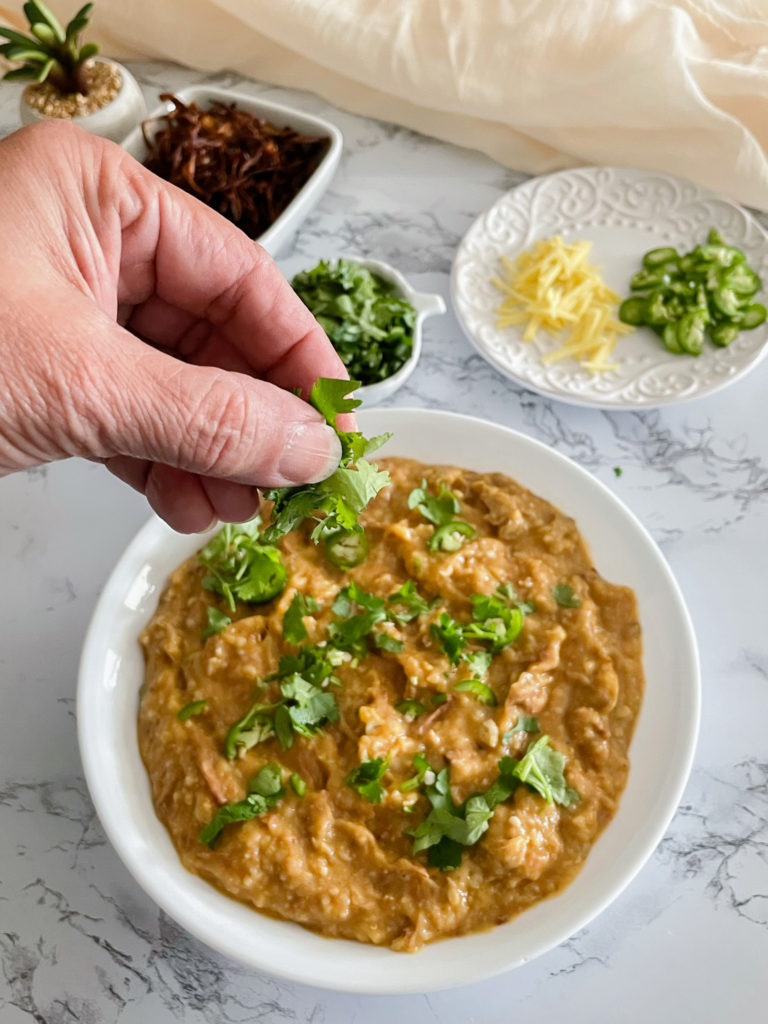


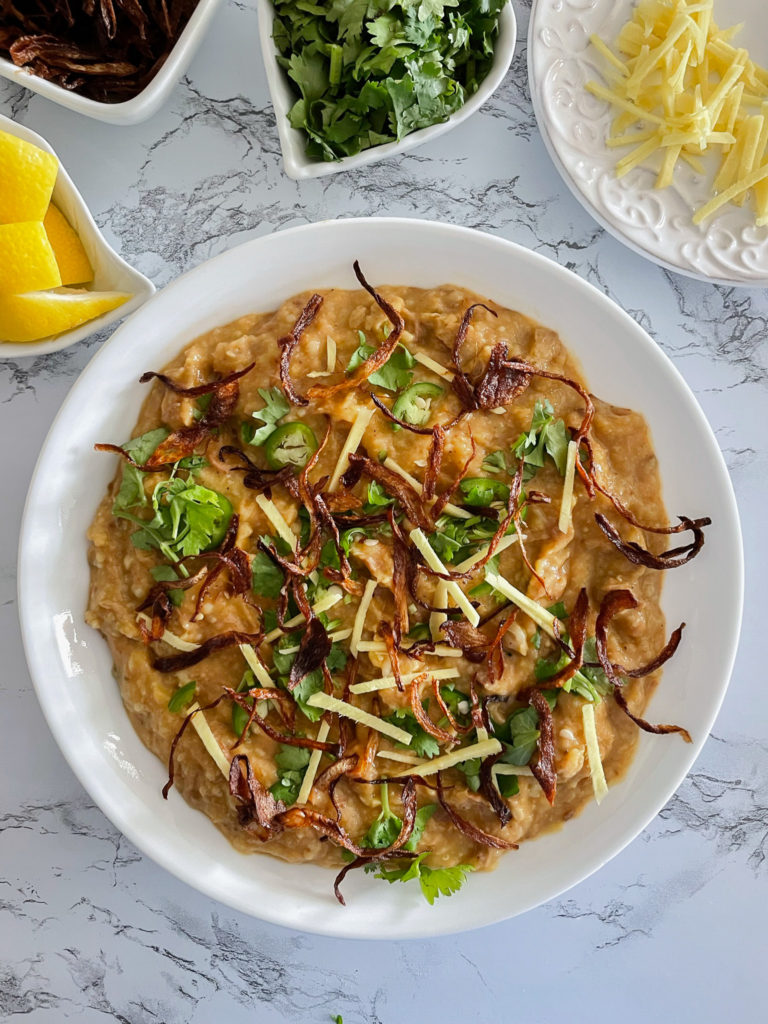
- Fried Onions – You could make this on your own, but most Indian / Pakistani stores have packaged fried onions.Try to find a brand that doesn’t use flour to coat the fried onions for best results, like the Nawabi brand found on Amazon.
- Cilantro & Green Chilli – typically served on the side as well as a garnish.
- Ginger – typically cut julienne style (in small strips)
- Chaat Masala – this tangy spice blend can really bring the dish together.
- Lemon Wedges – they add a refreshing tangy flavor to the dish.
- Raw onions soaked in vinegar for a few minutes – this is the way our family typically enjoys haleem!
Haleem is great on its own as a complete meal. If you’re serving it at a dinner party, you can pair it with a traditional appetizer – anything that is fried or even a kabab, here are some of our favorites:
- Chicken or Beef Samosas
- Chicken Shami Kabab: Chicken and Lentil Patties
- Potato chops: Indian Style Meat and Potato Croquettes
- Keema Paratha: Pakistani Stuffed Meat Pockets
How to Freeze Haleem?
Completely cool the Haleem, and Store Haleem in an airtight container for up to 2 months.
Haleem is the perfect freezer-friendly meal, especially because it is easy to make in large portions.
If you give this Pakistani Haleem recipe a try, we’d love to see it! Tag us on Instagram @thespicemess

Haleem
Ingredients
Grains
- 1 cup Wheat, peeled
- ½ cup Barley
- ½ cup Chana daal split chickpeas
- ⅓ cup Masoor daal red lentils
- ⅓ cup Urad daal black gram, split and skinned
- ⅓ cup Towar, Toor, Arhar pigeon Peas
- ⅓ cup Moong Daal mung bean
- ⅓ cup Basmati Rice
Meat Stew
- 500 grams Beef, large chunks plus bones (see notes).
- 4 tablespoon Ginger and garlic paste
- 2 tablespoon Coriander powder
- 1 tablespoon Cumin powder
- 1 tablespoon Turmeric powder Haldi
- 1 tablespoon Garam masala powder
- 1 tablespoon red chili powder
- Salt as per taste
- 2 Onions, large, sliced
- 1 ½ cup Oil, vegetable or canola
Garnish:
- 1 Fried onions see note 2
- ½ cup Cilantro, chopped
- ¼ cup Ginger, julienne
- 3-4 Green chilli, sliced
- 1 Lemon, large, cut into wedges
Instructions
Prepare Grains
- Soak the wheat and barley overnight.
- Soak all the daal (lentils) and rice in a bowl for 2-3 hours, before cooking.
- In a large pot, add the soaked wheat and daal. Add enough water to cover the grains, and cook for 5-7 minutes on medium-high heat. Then cook on low heat till all the wheat, barley, and daal (lentils) are tender. Depending on wheat, and how long it was soaked, it can take 2-3 hours. Mix occasionally, so that the mixture does not stick to the bottom. If it starts to stick, add a little hot water.
- Once tender, remove from heat.
- Transfer the mixture to a large blender, or use an immersion blender until the lentils and grains are completely blended, and no longer whole.
Meat
- In a separate large pot, add the oil, along with sliced onions. Cook on medium heat until lightly golden in color.
- Add in the meat, along with ginger garlic paste and mix well.
- When the meat is no longer red/pink on the outside, add the dry spices and mix well. Add ¼ cup water if the mixture starts to stick to the bottom.
- Add 2-3 cups of water and cook on medium heat. Note: You can do this step in a pressure cooker to help the meat cook faster.
- Once meat is tender, shred the meat, using a wooden spoon / ghutni (wooden masher) or even two forks. The meat should fall apart easily at this stage.
Mix the Meat and Grains
- Mix the meat with the grain mixture, and use a wooden spoon or masher to blend it completely.
Garnish and Serve
- Serve in a large bowl garnished with cilantro, ginger, green chilli and fried onion on top, and extra on the side.
Notes
- If you have beef bones available, cook them with the beef for extra flavor.
- Fried Onions – You could make this on your own, but most Indian / Pakistani stores have packaged fried onions. Try to find a brand that doesn’t use flour to coat the fried onions for best results, like the Nawabi brand we found on Amazon.